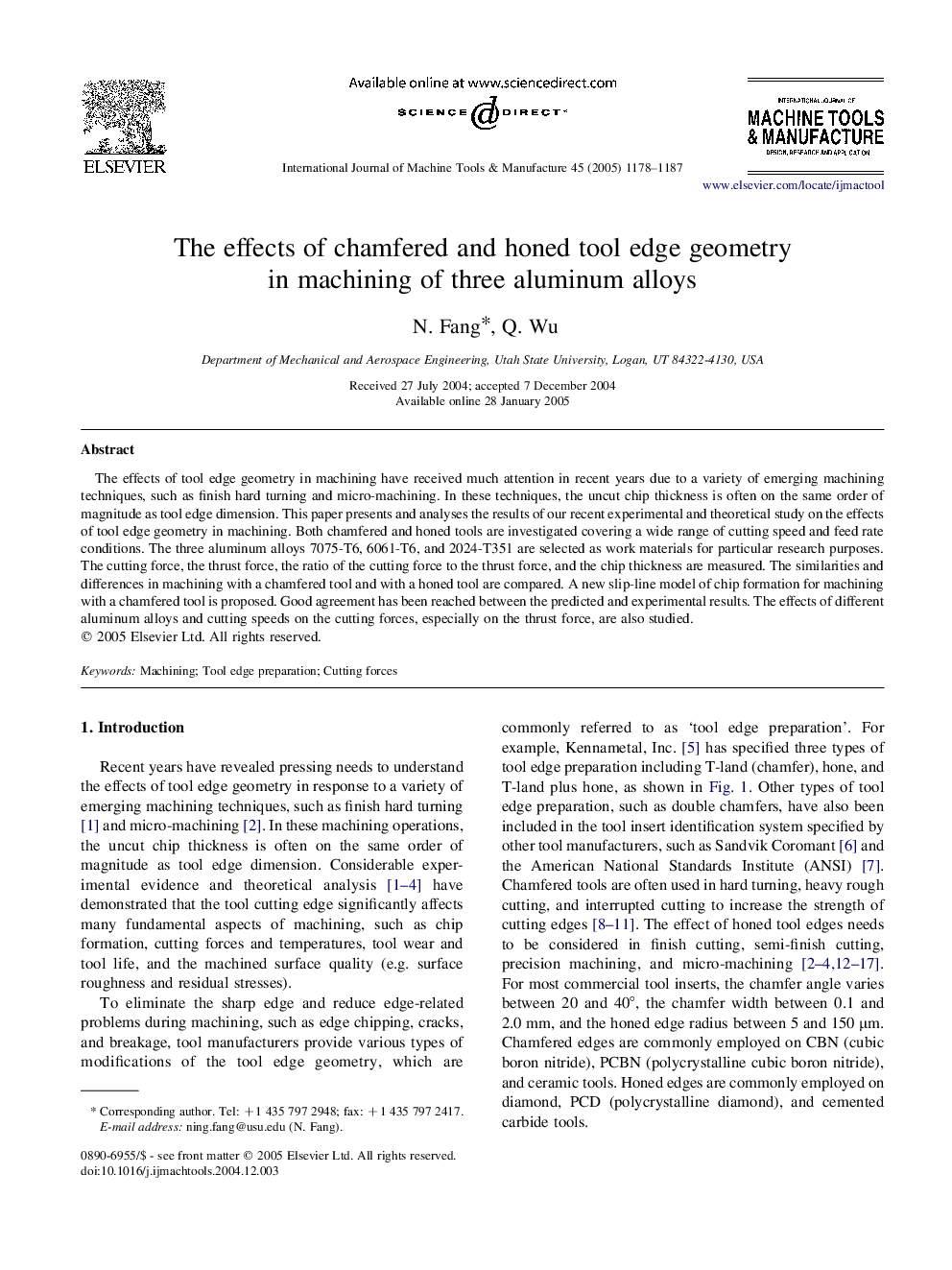| Article ID | Journal | Published Year | Pages | File Type |
|---|---|---|---|---|
| 9705312 | International Journal of Machine Tools and Manufacture | 2005 | 10 Pages |
Abstract
The effects of tool edge geometry in machining have received much attention in recent years due to a variety of emerging machining techniques, such as finish hard turning and micro-machining. In these techniques, the uncut chip thickness is often on the same order of magnitude as tool edge dimension. This paper presents and analyses the results of our recent experimental and theoretical study on the effects of tool edge geometry in machining. Both chamfered and honed tools are investigated covering a wide range of cutting speed and feed rate conditions. The three aluminum alloys 7075-T6, 6061-T6, and 2024-T351 are selected as work materials for particular research purposes. The cutting force, the thrust force, the ratio of the cutting force to the thrust force, and the chip thickness are measured. The similarities and differences in machining with a chamfered tool and with a honed tool are compared. A new slip-line model of chip formation for machining with a chamfered tool is proposed. Good agreement has been reached between the predicted and experimental results. The effects of different aluminum alloys and cutting speeds on the cutting forces, especially on the thrust force, are also studied.
Keywords
Related Topics
Physical Sciences and Engineering
Engineering
Industrial and Manufacturing Engineering
Authors
N. Fang, Q. Wu,
